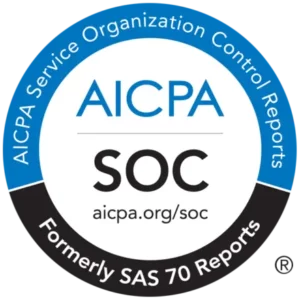What Is an Interjection and How to Use Them to Express an Emotion?
Writing is not just a cluster of sentences put together. When done correctly, writing can also express emotion appropriately. Nouns, adjectives, adverbs are vital in a sentence to deliver the correct meaning. A writer cannot form a complete and meaningful sentence without using these parts of speeches. But, they can write a sentence without an interjection.

The writer can express the meaning as well. However, the meaning of the sentence may seem incomplete due to the lack of expression. Therefore, to write a good piece, the writer must use appropriate interjection marks, which can allow them to express their emotions aptly. To use the interjections, the writer must first know what an interjection is.
What Is an Interjection?
Interjections are those words that help the writer to explain their feelings in their writing. They put expression, emotions, and life into writing. However, these interjections can have multiple different functions.
Though, in a formal writeup, the scope of using interjection is not much. In dialogue-based conversations, these interjections can play a role several times. They help break away from the formalized style of writing.
In writing or colloquial language, interjections have different functions and based on that, the expressions also change. Here is a list of examples of Interjections that work as the emotion of sentences.
Usage of Interjections in Writing:
Writing can have a particular theme, and based on that, the tone of the writeup can vary. Therefore, the use of interjection can also vary from one writing to another. Therefore, before using the interjection, the writer must know what an interjection is and how to properly use them in content.
In Formal Writing:
Though writers use interjections in their writings, it is not good to use them in formal reports or dissertation papers. The writer should stay away from using interjections in work-related documents.
In formal writing, objectivity is the key. Research papers and dissertation papers may not always need expressive interjections. However, in creative writings, the writers use these interjections often to show emotion.
- Hurrah: This expression expresses joy and happiness. However, researchers cannot use this in their paper.
Appropriate usage of this interjection: Hurrah! We have won the match.
- Alas: Alas expresses sorrow or utter disappointment.
Example of Alas in a sentence: Alas, they could not stand up against the injustice.
In Informal Writing:
In informal writing, there is a broad scope for using interjections. Some commonly used interjections are:
“Bravo! (Appreciation), Phew! (Relief), Shoo! (To Remove),” and others. However, some interjections change their meaning as per the usage of the sentence. For example, the word Oh! It can express surprise, disappointment, or pain, depending on the phrases.
Creative Writing:
When a writer is composing content and building a character, they add sets of expressions that are repeatedly used. This gradually becomes part of the character’s behavior. This characterization, in films, television, and stories, is very significant.

Therefore, the writers usually take their liberty to create these interjections. For example, the character Bart Simpson from The Simpsons uses “Cowabunga!” here and there. Nerdy Sheldon Cooper from The Big Bang Theory also makes the interjection “Bazinga!” a part of his conversational language.
Internet-Lingo:
Though the language tends to break and modify, the internet has created its new world, where short forms are everywhere. These interjections, though, do not have much use in writings, but can be found in abundance in text messages and social media posts.
They are sometimes the substitutions of classic phrases, and sometimes are short forms of expressions. For example, LOL is “laugh out loud,” and BRB is “be right back.”
Some One-word Expressions:
Different single-word expressions can be added to a sentence to heighten the emotion of the speaker. Some of these words are ahem, ouch, oh no, cool, indeed, etc.
Some Meaningless Words for Interjection:
Using meaningless words for interjection is not new. For example, frequently, words like “uh-huh, mm-mm” are used, which have no meaning.
The writers can use these words at the beginning of the sentence or in the middle. However, using an interjection at the end of a sentence is not incorrect.
The usage of interjections is flexible. It is important to use them properly to express the sense of emotion in writing.
Interjection and Citation:
Although one can avoid interjections in a formal report or paper writing, a writer can take their liberty to use one or two. But, the writer needs to keep in mind that using interjections in a formal writeup can be superfluous.
Although using interjections is mostly instinct-based, the writers can use a grammar checker tool to find out if there is any mistake in the construction due to the usage of interjections. Therefore, if the writer is using them, they must know
What Is an Interjection?
It may also happen that the researchers or writers are using parts of another writing to substantiate their answers. The piece of content that they are quoting may have interjections. In that case, they should not avoid it and keep it as is.
The writers also need to do a proper citation. They should include all valid information like the name of the work, writer, publication date, publisher, page number, etcetera. They can follow any style of citation, including the MLA, Chicago, or APA.
Writers must remember that interjection is a part of writing. Hence, they cannot ignore it. If they mistakenly remove it from their quotations and forget the proper citation, there could be an instance of plagiarism. Though the mistake would be accidental, the harm done could affect the writer’s career.
Hence, it is always best for writers or researchers to use a plagiarism checker to compare the content with other existing articles available on the internet and generate a detailed plagiarism report. The writers can work based on the reports, and then produce content without plagiarism.

